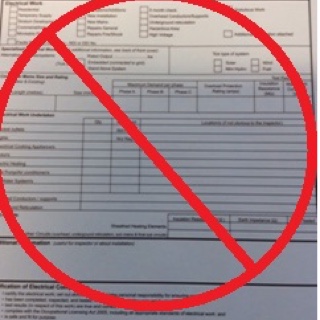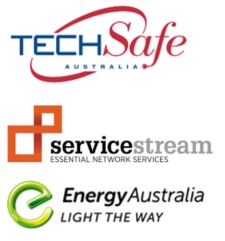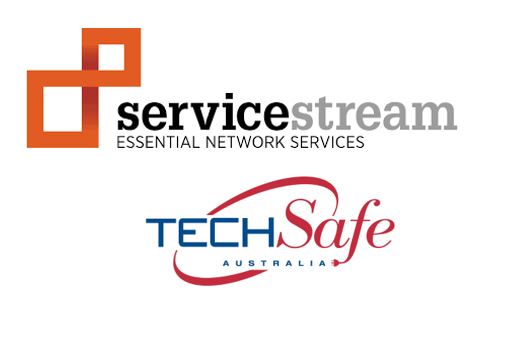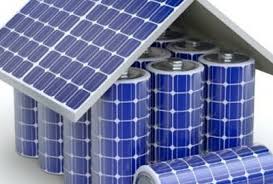Information
-
Client / Site
-
Conducted on
-
Prepared by
-
Location
-
Initial Date of Installation
-
PV System Size
MAIN SWITCHBOARD
-
Describe where the Main Switchboard is Located
-
Attach Photo/s of the Main Switchboard Location
-
Record the Main Switch Size, Model and Location
-
Attach a photo of the Main Switch and Location
-
Is there space near MSB to locate Voltage Optimiser (VO)? (within 10 meters).
-
Attach a Photo of the space near MSB to locate Voltage Optimiser
-
Are there any tight corners to negotiate the VO into place? These units weight around 650kgs. Dimensions are 1500H X 1500W x 800D. Describe the Access.
-
Attach photos of the Access.
-
Is there essential/non-essential supply arrangement on site?
-
Attach a photo of the essential/non-essential supply arrangement
-
Is there an emergency generator on site?
-
Provide details of the generator connection, ATS or MTS.
-
Attach Photos of the Generator changeover switch, and Photo of the Generator if possible.
TESTING - Whenever performing Testing or opening electrical equipment, ensure correct PPE is worn and correct safety procedures are followed in accordance with TechSafe SWMS.
-
Perform a Voltage Test between RED phase to Neutral , Record the result along with the Time and date.
-
Perform a Voltage Test between WHITE phase to Neutral , Record the result along with the Time and date.
-
Perform a Voltage Test between BLUE phase to Neutral , Record the result along with the Time and date.
Solar Connected SWITCHBOARD
-
Is the switchboard arrangement compliant?
-
Is the CB selected correctly rated to protect the cable installed. AS/NZS 3000 2.5.2
-
Is the AC Cable sized and rated correctly for the min required by the Inverter output current AS/NZS 3000 2.5.2
-
Has the switchboard be adequately sealed to prevent the spread of fire? AS/NZS 3000 2.9.7
-
Has the switchboard been labelled correctly to identify the installed circuits, "SOLAR Main Switch" and Solar NEUTRAL labelled?
-
Is the Switchboard segregated into ESSENTIAL & NON-ESSENTIAL circuits
-
Provide details of any issues identified.
-
Attach clear images of the Switchboard
-
Attach clear images of the Switchboard Internal connections of the Solar PV
-
Attach clear images of the Switchboard Schedule
AC ISOLATORS
-
List the AC Isolator Rating located inside the Switchboard
-
List the AC Isolator Rating located Adjacent the Inverter if installed.
-
Attach a photo of the AC Isolators
-
List any issues identified with the AC Isolators
DC ISOLATORS
-
DC Isolator Brand and Model
-
DC Isolator current as per connected configuration (per pole rating if connected to a Transformerless Inverter)
-
Is the DC Isolator Polarised?
-
Attach a Photo of the DC Isolator BEFORE inspecting
-
Attach a photo of the INTERNALS of the DC Isolator, plus any issues ie: water ingress, Damage etc
-
Attach a photo of the DC Isolator AFTER the inspection, showing the switch ON if safe to do so.
-
List any Issues identified with the DC Isolator, ie: Incorrectly wired, Incorrect Rating, IP not maintained etc.
DC ISOLATORS
-
DC Isolator Brand and Model
-
DC Isolator current as per connected configuration (per pole rating if connected to a Transformerless Inverter)
-
Is the DC Isolator Polarised?
-
Attach a Photo of the DC Isolator BEFORE inspecting
-
Attach a photo of the INTERNALS of the DC Isolator, plus any issues ie: water ingress, Damage etc
-
Attach a photo of the DC Isolator AFTER the inspection, showing the switch ON if safe to do so.
-
List any Issues identified with the DC Isolator, ie: Incorrectly wired, Incorrect Rating, IP not maintained etc.
-
Are there Additional DC Isolators?
DC ISOLATORS
-
DC Isolator Brand and Model
-
DC Isolator current as per connected configuration (per pole rating if connected to a Transformerless Inverter)
-
Is the DC Isolator Polarised?
-
Attach a Photo of the DC Isolator BEFORE inspecting
-
Attach a photo of the INTERNALS of the DC Isolator, plus any issues ie: water ingress, Damage etc
-
Attach a photo of the DC Isolator AFTER the inspection, showing the switch ON if safe to do so.
-
List any Issues identified with the DC Isolator, ie: Incorrectly wired, Incorrect Rating, IP not maintained etc.
DC ISOLATORS
-
DC Isolator Brand and Model
-
DC Isolator current as per connected configuration (per pole rating if connected to a Transformerless Inverter)
-
Is the DC Isolator Polarised?
-
Attach a Photo of the DC Isolator BEFORE inspecting
-
Attach a photo of the INTERNALS of the DC Isolator, plus any issues ie: water ingress, Damage etc
-
Attach a photo of the DC Isolator AFTER the inspection, showing the switch ON if safe to do so.
-
List any Issues identified with the DC Isolator, ie: Incorrectly wired, Incorrect Rating, IP not maintained etc.
DC ISOLATORS
-
DC Isolator Brand and Model
-
DC Isolator current as per connected configuration (per pole rating if connected to a Transformerless Inverter)
-
Is the DC Isolator Polarised?
-
Attach a Photo of the DC Isolator BEFORE inspecting
-
Attach a photo of the INTERNALS of the DC Isolator, plus any issues ie: water ingress, Damage etc
-
Attach a photo of the DC Isolator AFTER the inspection, showing the switch ON if safe to do so.
-
List any Issues identified with the DC Isolator, ie: Incorrectly wired, Incorrect Rating, IP not maintained etc.
DC ISOLATORS
-
DC Isolator Brand and Model
-
DC Isolator current as per connected configuration (per pole rating if connected to a Transformerless Inverter)
-
Is the DC Isolator Polarised?
-
Attach a Photo of the DC Isolator BEFORE inspecting
-
Attach a photo of the INTERNALS of the DC Isolator, plus any issues ie: water ingress, Damage etc
-
Attach a photo of the DC Isolator AFTER the inspection, showing the switch ON if safe to do so.
-
List any Issues identified with the DC Isolator, ie: Incorrectly wired, Incorrect Rating, IP not maintained etc.
-
Are there Additional DC Isolators?
DC ISOLATORS
-
DC Isolator Brand and Model
-
DC Isolator current as per connected configuration (per pole rating if connected to a Transformerless Inverter)
-
Is the DC Isolator Polarised?
-
Attach a Photo of the DC Isolator BEFORE inspecting
-
Attach a photo of the INTERNALS of the DC Isolator, plus any issues ie: water ingress, Damage etc
-
Attach a photo of the DC Isolator AFTER the inspection, showing the switch ON if safe to do so.
-
List any Issues identified with the DC Isolator, ie: Incorrectly wired, Incorrect Rating, IP not maintained etc.
DC ISOLATORS
-
DC Isolator Brand and Model
-
DC Isolator current as per connected configuration (per pole rating if connected to a Transformerless Inverter)
-
Is the DC Isolator Polarised?
-
Attach a Photo of the DC Isolator BEFORE inspecting
-
Attach a photo of the INTERNALS of the DC Isolator, plus any issues ie: water ingress, Damage etc
-
Attach a photo of the DC Isolator AFTER the inspection, showing the switch ON if safe to do so.
-
List any Issues identified with the DC Isolator, ie: Incorrectly wired, Incorrect Rating, IP not maintained etc.
DC ISOLATORS
-
DC Isolator Brand and Model
-
DC Isolator current as per connected configuration (per pole rating if connected to a Transformerless Inverter)
-
Is the DC Isolator Polarised?
-
Attach a Photo of the DC Isolator BEFORE inspecting
-
Attach a photo of the INTERNALS of the DC Isolator, plus any issues ie: water ingress, Damage etc
-
Attach a photo of the DC Isolator AFTER the inspection, showing the switch ON if safe to do so.
-
List any Issues identified with the DC Isolator, ie: Incorrectly wired, Incorrect Rating, IP not maintained etc.
DC ISOLATORS
-
DC Isolator Brand and Model
-
DC Isolator current as per connected configuration (per pole rating if connected to a Transformerless Inverter)
-
Is the DC Isolator Polarised?
-
Attach a Photo of the DC Isolator BEFORE inspecting
-
Attach a photo of the INTERNALS of the DC Isolator, plus any issues ie: water ingress, Damage etc
-
Attach a photo of the DC Isolator AFTER the inspection, showing the switch ON if safe to do so.
-
List any Issues identified with the DC Isolator, ie: Incorrectly wired, Incorrect Rating, IP not maintained etc.
-
Are there Additional DC Isolators?
DC ISOLATORS
-
DC Isolator Brand and Model
-
DC Isolator current as per connected configuration (per pole rating if connected to a Transformerless Inverter)
-
Is the DC Isolator Polarised?
-
Attach a Photo of the DC Isolator BEFORE inspecting
-
Attach a photo of the INTERNALS of the DC Isolator, plus any issues ie: water ingress, Damage etc
-
Attach a photo of the DC Isolator AFTER the inspection, showing the switch ON if safe to do so.
-
List any Issues identified with the DC Isolator, ie: Incorrectly wired, Incorrect Rating, IP not maintained etc.
DC ISOLATORS
-
DC Isolator Brand and Model
-
DC Isolator current as per connected configuration (per pole rating if connected to a Transformerless Inverter)
-
Is the DC Isolator Polarised?
-
Attach a Photo of the DC Isolator BEFORE inspecting
-
Attach a photo of the INTERNALS of the DC Isolator, plus any issues ie: water ingress, Damage etc
-
Attach a photo of the DC Isolator AFTER the inspection, showing the switch ON if safe to do so.
-
List any Issues identified with the DC Isolator, ie: Incorrectly wired, Incorrect Rating, IP not maintained etc.
DC ISOLATORS
-
DC Isolator Brand and Model
-
DC Isolator current as per connected configuration (per pole rating if connected to a Transformerless Inverter)
-
Is the DC Isolator Polarised?
-
Attach a Photo of the DC Isolator BEFORE inspecting
-
Attach a photo of the INTERNALS of the DC Isolator, plus any issues ie: water ingress, Damage etc
-
Attach a photo of the DC Isolator AFTER the inspection, showing the switch ON if safe to do so.
-
List any Issues identified with the DC Isolator, ie: Incorrectly wired, Incorrect Rating, IP not maintained etc.
DC ISOLATORS
-
DC Isolator Brand and Model
-
DC Isolator current as per connected configuration (per pole rating if connected to a Transformerless Inverter)
-
Is the DC Isolator Polarised?
-
Attach a Photo of the DC Isolator BEFORE inspecting
-
Attach a photo of the INTERNALS of the DC Isolator, plus any issues ie: water ingress, Damage etc
-
Attach a photo of the DC Isolator AFTER the inspection, showing the switch ON if safe to do so.
-
List any Issues identified with the DC Isolator, ie: Incorrectly wired, Incorrect Rating, IP not maintained etc.
-
Are there Additional DC Isolators?
DC ISOLATORS
-
DC Isolator Brand and Model
-
DC Isolator current as per connected configuration (per pole rating if connected to a Transformerless Inverter)
-
Is the DC Isolator Polarised?
-
Attach a Photo of the DC Isolator BEFORE inspecting
-
Attach a photo of the INTERNALS of the DC Isolator, plus any issues ie: water ingress, Damage etc
-
Attach a photo of the DC Isolator AFTER the inspection, showing the switch ON if safe to do so.
-
List any Issues identified with the DC Isolator, ie: Incorrectly wired, Incorrect Rating, IP not maintained etc.
DC ISOLATORS
-
DC Isolator Brand and Model
-
DC Isolator current as per connected configuration (per pole rating if connected to a Transformerless Inverter)
-
Is the DC Isolator Polarised?
-
Attach a Photo of the DC Isolator BEFORE inspecting
-
Attach a photo of the INTERNALS of the DC Isolator, plus any issues ie: water ingress, Damage etc
-
Attach a photo of the DC Isolator AFTER the inspection, showing the switch ON if safe to do so.
-
List any Issues identified with the DC Isolator, ie: Incorrectly wired, Incorrect Rating, IP not maintained etc.
DC ISOLATORS
-
DC Isolator Brand and Model
-
DC Isolator current as per connected configuration (per pole rating if connected to a Transformerless Inverter)
-
Is the DC Isolator Polarised?
-
Attach a Photo of the DC Isolator BEFORE inspecting
-
Attach a photo of the INTERNALS of the DC Isolator, plus any issues ie: water ingress, Damage etc
-
Attach a photo of the DC Isolator AFTER the inspection, showing the switch ON if safe to do so.
-
List any Issues identified with the DC Isolator, ie: Incorrectly wired, Incorrect Rating, IP not maintained etc.
DC ISOLATORS
-
DC Isolator Brand and Model
-
DC Isolator current as per connected configuration (per pole rating if connected to a Transformerless Inverter)
-
Is the DC Isolator Polarised?
-
Attach a Photo of the DC Isolator BEFORE inspecting
-
Attach a photo of the INTERNALS of the DC Isolator, plus any issues ie: water ingress, Damage etc
-
Attach a photo of the DC Isolator AFTER the inspection, showing the switch ON if safe to do so.
-
List any Issues identified with the DC Isolator, ie: Incorrectly wired, Incorrect Rating, IP not maintained etc.
-
Have any of the DC Isolator per pole Ratings been exceeded, ie: Isc 8.7A x 1.25 = 10.9A @ Max Voc 825VDC
INVERTERS
-
List the inverter BRAND and MODEL
-
Inverter Quantity
-
Inverter AC Power Rating
-
Inverter AC Current Rating
-
Inverter MPPT Operating Range
-
Inverter Max DC Current
-
Inverter Max DC Voltage
-
Inverter IP Rating
-
Is the Inverter IP Rating suitable for the location of installation?
-
Inverter is listed on the CEC Approved Inverter List, at the time of installation
-
Attach a Photo of the Inverter showing the installation location
-
List any Issues identified with the Inverter/s, ie: Incorrectly wired, Incorrect Rating, IP not maintained etc.
SOLAR PANEL MODULES
-
Module BRAND and MODEL
-
Module Quantity per inverter
-
Module Power Rating
-
Module Voltage Open Circuit
-
Module Short Circuit Current
-
PV Modules are listed on the CEC Approved Modules list for the time of installation.
-
Attach a photo of the PV Module Label, or labels if different PV Modules installed.
-
List any Issues identified with the PV Modules, ie: Incorrectly configured, Poor layout or design etc.
DOCUMENTATION
-
Has the owner of the system been provided with a System Documentation folder in accordance with AS/NZS 5033 and AS/NZS 4777?
CHECKLIST - COMPLIANCE WITH STANDARDS AND GUIDELINES
-
The Array Vmp ( at max temp) is greater than 1.1 x min VDC of the inverters voltage operating window
-
The Array Max Voltage (at minimum temp) is less than the maximum VDC of the inverters voltage operation window
-
Roof Penetrations by any of the components used in the wiring system, are suitably sealed and waterproof
-
The PV Array structure allows sufficient clearances to facilitate self cleaning of the roof to prevent any buildup of leaves and other debris
-
Any timber used for the array structure must be suitable for the environment it is installed and included in the maintenance documentation for replacement.
-
The Array structures roof penetrations are suitably sealed for the life of the system
-
Any DC Enclosures including enclosures for string protection have a min IP 54 rating, and have been installed to maintain the IP Rating. Including any connections or conduits to the enclosure
-
There are no visible loose connections in LV Cables
-
The Load Breaking Lockable DC Isolator adjacent to the inverter is correctly rated for the DC Voltage and Current
-
The DC Isolator at the inverter is mounted close, within sight and not exceeding 3 mtrs.
-
The DC Isolator at the Inverter is correctly wired
-
The DC Isolator at the Inverter is NOT Polarised and operates in ALL Active conductors
-
If Multiple DC Isolators are installed at the Inverter, they are grouped and ganged in a common location
-
The Load Breaking Lockable DC Isolator adjacent to the inverter is correctly rated for the DC Voltage and Current
-
The DC Isolators at the Array are correctly wired
-
All conduits to the DC Isolators are adequately sealed to prevent the ingress of water and to maintain the IP rating of the Isolator
-
Inverter or any heavy part of the installation is mounted safely with no imminent risk of falling.
-
If there is not clear line of sight between the switchboard and any person working on the inverter, an AC Isolator is provided at the inverter
-
Modules of the same string are installed in the same orientation (+ or - 5 degrees)
-
If the Voc of a Non-Residentail system exceeds 600VDC the installation has associated wiring protection and restricted access were required.
-
There is adequate clearance around the inverter in accordance with the manufacturers instructions for space and ventilation
-
Provide information relating to any non-compliance identified in the above section
-
Provide photos of the above issues
PV Array Structure and Array
-
PV Array structure and attachment to the roof, visually inspected and appears secure
-
All Array supports, brackets, screws and other metal parts are of similar material, to minimize the corrosive and electrolysis effect of diss-similar metals.
-
Where the number of PV Array strings could result in a potential fault current higher than the module reverse current, appropriate string protection is provided.
-
If String Protection is installed, it is rated for the DC Application and Rated Current
-
The PV Array has been provided with an equipotential bond connected to the earth bar in the switchboard.
-
The PV Array Frame and PV Modules have been provided with earthing connections to comply with AS/NZS 5033
-
Modules have sufficient ventilation space to minimise temperature rise
-
If lightning protection has been installed, it has been installed in accordance with AS1768
-
List any issues identified with the PV Array
SIGNAGE
-
Any PV Array Junction Boxes are labelled "WARNING: HAZARDOUS DC VOLTAGE"
-
Shut Down procedure is correct and is permanently fixed at the inverter and/or switchboard
-
If the PV System is connected to a Distribution Board, the Main Switchboard and all other DB's are signed with "WARNING DUAL SUPPLY, ISOLATE SOLAR SUPPLY AT DISTRIBUTION BOARD ...XXX"
-
The AC Solar circuit breaker inside the switchboard is labelled "MAIN SWITCH SOLAR SUPPLY"
-
The AC Main Switch circuit breaker inside the switchboard is labelled "NORMAL SUPPLY MAIN SWITCH "
-
"WARNING DUAL SUPPLY ISOLATE BOTH NORMAL AND SOLAR SUPPLIES BEFORE WORKING ON THIS SWITCHBOARD" is located on the switchboard.
-
Fire Emergency Label is permanently fixed next to the meter box and main switchboard.<br>SOLAR ARRAY ON ..(Location).. including correct Voc and Isc ratings
-
A 70mm circular green label "PV" is permenantly fixed to the meter box or main switchboard, and is visible upon approach
-
The DC Isolators near the Inverter is signed "PV Array DC Isolator" or similar
-
If above 600VDC a sign shall be fixed to the restricted access areas, "WARNING HAZARDOUS VOLTAGES - AUTHORIZED ACCESS ONLY"
-
Provide any additional Information if any labels are found to be missing.
GENERAL WIRING AND INSTALLATION WORK
-
There is NO exposed LV LIVE parts on any installed equipment
-
All electrical equipment for the system is installed in accordance with AS/NZS 3000
-
All PV cabling or conduit work clearly labelled as "SOLAR DC" every 2 mtrs, supported and secured
-
Connection of AC and DC components in the same enclosure have been provided with a physical separation to achieve compliant segregation
-
Array wiring to the Inverter is protected from mechanical damage
-
Double Insulation has been maintained between any live conductor and any earthed or exposed conductive part
-
All DC Cables installed within the building is enclosed in Heavy Duty conduit
-
All DC connectors throughout the array are of the same type and same model.
-
All Array cables are securely fixed into place, Plastic cable ties cannot be used as the primary support
-
Any conduit used which is exposed to the sun, is UV rated amd marked with the letter "T"
-
Array wiring to the inverter is rated for the voltage and current
-
All Joints in the cables are enclosed in junction boxes in accordance with AS/NZS 3000
-
LV and Array cables have not been installed near building surfaces as per AS/NZS 3000
-
Provide Information regarding any non-compliance identified in the above section
-
Provide Photos of any issues identified.
Performance of System
-
Is the inverter installed in FULL sun? is so for how many hrs per day?
-
PV Array Tilt
-
PV Array Orientation
-
Is there any shading of the Array?
-
Provide Photos of any issues identified.
Finalisation
-
Upload ALL relevant photos of any additional issues identified.
-
Additional information if required.
-
Rate the Outcome of the Audit
-
If the System has been deemed to be SAFE, Re-energise and leave ON
-
If ON, Upload photos of the system in operation, ie: Inverter system working.
-
If OFF, Upload a photo of the system switched OFF, and locked OFF with the Solar CB Locking Device.














